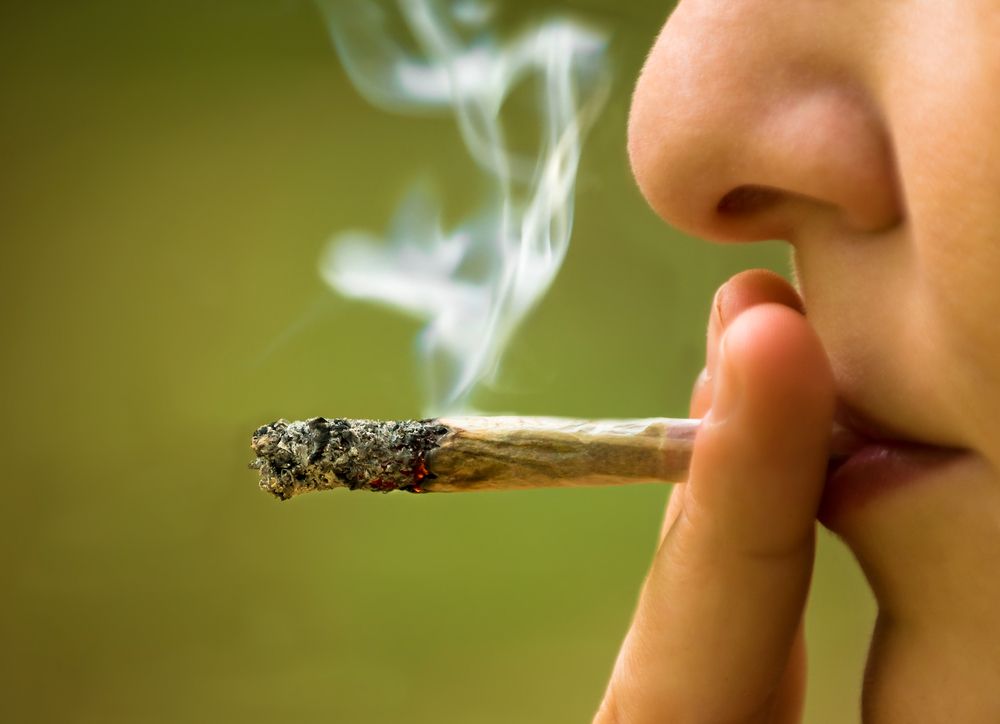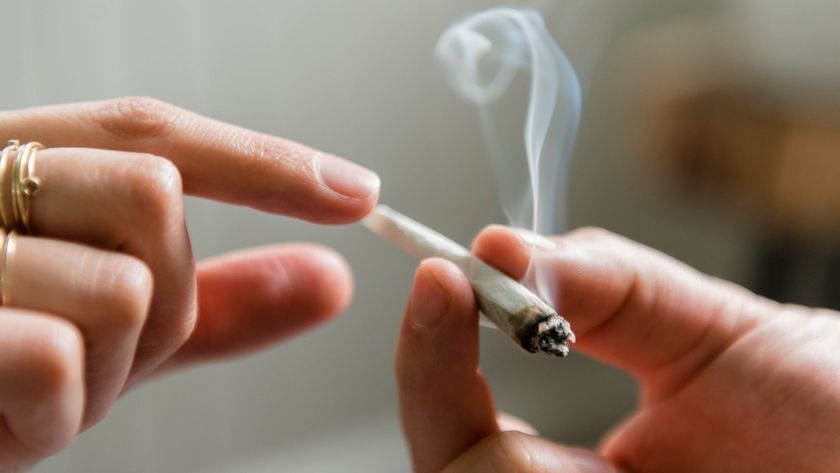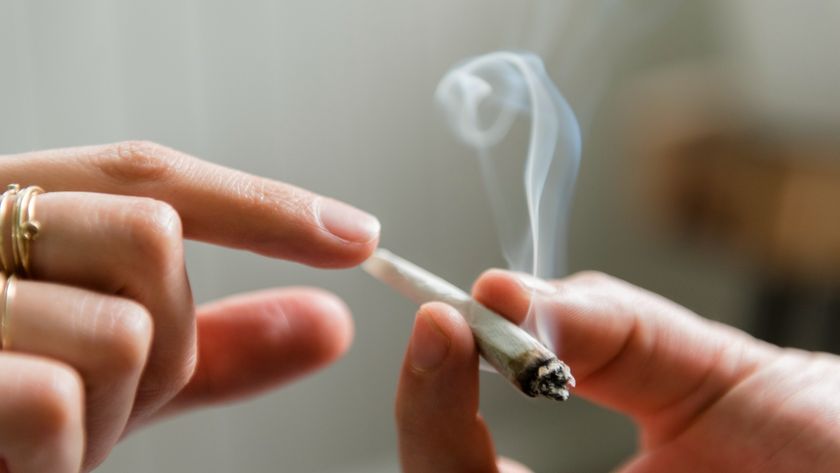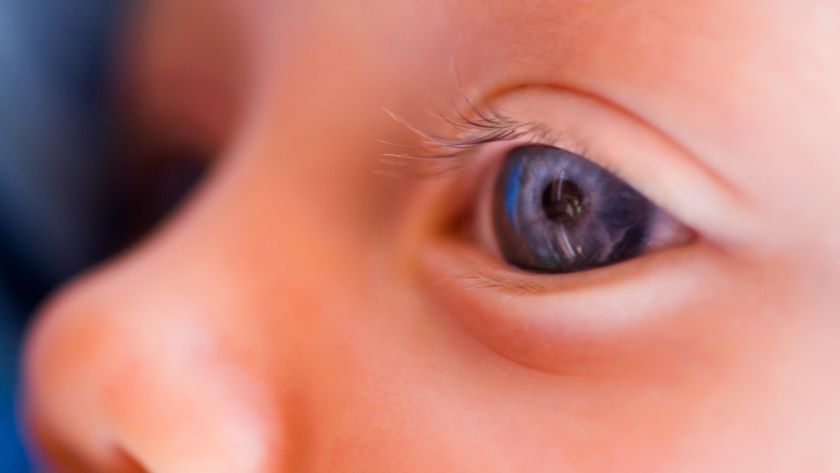Denver to Allow Marijuana in Bars: What's the Health Impact?

The city of Denver will soon allow people to smoke or consume marijuana in some bars and restaurants, thanks to the passage of a new initiative in the 2016 election.
The new law, called Initiative 300, mandates a four-year pilot plan in the city that allows bar and restaurant owners to apply for permits to allow marijuana use on their premises. Users won't be able to smoke indoors, but they will be able to smoke in outdoor areas. They'll also be able to vape marijuana (using electronic cigarettes) or consume marijuana edibles on properties with permits. However, restaurants and bars won't be able to sell marijuana, so the rules will by BYOP — bring your own pot.
The measure — which could start becoming implemented in 2017, according to the Denverite — has won praise from some in the tourism industry, given that tourists and renters in Denver often have few places to go to use the pot they can legally buy in Colorado. But other advocates are worried about the potential health effects of the new law.

"Secondhand marijuana smoke has 33 cancer-causing chemicals, according to the California EPA [Environmental Protection Agency], and some of the same chemicals in marijuana smoke are also into tobacco smoke," said Peter Bialick, president of The Group to Alleviate Smoking Pollution (GASP) of Colorado.
Secondhand high?
One thing Denverites won't have to worry about much with the new law is getting a secondhand high. That's not because marijuana can't cause "contact highs." Research suggests that, in some extreme situations, it can. But this depends on the room ventilation and the strength of the pot smoked. A series of studies conducted at the Johns Hopkins School of Medicine put nonsmokers in a closed plexiglass room with six smokers puffing away at joints containing either 5.3 percent THC (tetrahydrocannabinol, the psychoactive ingredient in pot) or 11.3 percent THC. Previous research on secondhand effects had mostly used fairly weak weed, the researchers wrote in the Journal of Analytical Toxicology in 2015, which isn't a good representation of the increasingly concentrated pot being sold today. A study of seized illegal pot published in February 2016 found that the average strength of marijuana has increased from about 4 percent THC in 1995 to about 12 percent in 2014.
The Johns Hopkins researchers found that an hour of exposure to high-THC pot in no ventilation caused detectable THC in nonsmokers' urine, peaking within 2 to 11 hours after exposure. Lower, but still detectable, levels were found when nonsmokers were exposed to low-THC pot without ventilation or high-THC pot with ventilation. In a follow-up analysis published in the journal Drug and Alcohol Dependence in 2015, the same researchers found that nonsmokers who were exposed to marijuana in unventilated rooms had increased heart rates, and that the secondhand smoke caused a mild to moderate sedative effect and impaired their performance slightly on some cognitive tasks.
Sign up for the Live Science daily newsletter now
Get the world’s most fascinating discoveries delivered straight to your inbox.
However, when nonsmokers were exposed to marijuana smoke in ventilated areas, they did not show any of these effects. [7 Ways Marijuana May Affect the Brain]
Because indoor smoking isn't allowed under Denver's new law, the contact high isn't likely to be a problem.
Vaping and lung health
Rather, what worries health experts are other compounds in marijuana smoke or vapor. Smoke from people using marijuana on rooftop patios or in outdoor smoking sections could affect those in neighboring buildings or passersby, Bialick told Live Science.
Portable vaporizers might also expose nonsmokers to pollutants. But e-cigarettes are relatively new, so research on secondhand exposure to their vapors is limited compared to research on secondhand smoke. The studies that have been done generally focus on tobacco e-cigarettes, not marijuana. E-cigarettes use battery power to heat a liquid (known as "vape juice") into a vapor, allowing the user to inhale the substance without any combustion. (Vaporizing a liquid into a gas does not change the substance's chemical formula, but the combustion of a substance into smoke does involve chemical reactions, so it does change the chemistry of the substance that is inhaled.) [Trippy Tales: The History of 8 Hallucinogens]
However, initial investigations suggest that the vapor from e-cigarettes may be dangerous for health. A 2014 study on e-cigarettes found that their vapors contain ultrafine particles that can become lodged deep in the lungs of people exposed to secondhand smoke. A separate study released the same year found higher levels of nicotine in the air of homes of e-cigarette users than in homes where no one smoked or vaped tobacco; the researchers also found that people who were exposed to secondhand tobacco smoke and to secondhand tobacco vapor had similar levels of a biomarker for nicotine exposure in their saliva.
Research on vaping marijuana, however, is hard to come by. A 2015 review paper in the Canadian Journal of Respiratory Therapy found that most studies so far have suggested that firsthand exposure to marijuana vapors is safer than firsthand exposure to marijuana smoke. A 2008 study, however, found that unregulated "street" cannabis could produce dangerous levels of ammonia when vaped. None of the research looked at secondhand exposure.
"The unfortunate part about the research on marijuana is that because it's been illegal, it's limited in terms of the research that's been done," Bialick said. More studies are beginning to emerge, however. "Hopefully, we'll see some more research on the use of vaping devices," he said.
Original article on Live Science.

Stephanie Pappas is a contributing writer for Live Science, covering topics ranging from geoscience to archaeology to the human brain and behavior. She was previously a senior writer for Live Science but is now a freelancer based in Denver, Colorado, and regularly contributes to Scientific American and The Monitor, the monthly magazine of the American Psychological Association. Stephanie received a bachelor's degree in psychology from the University of South Carolina and a graduate certificate in science communication from the University of California, Santa Cruz.



